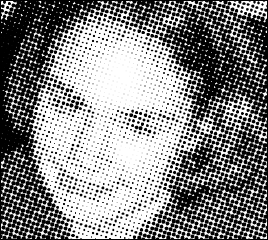Something as important as getting the right resolution for your images deserves its own chapter, but fortunately, the topic isn't all that complex. In this chapter, you discover the necessary resolution for various uses of Photoshop imagery (from printing a high-resolution graphic to e-mailing a picture of your kids to Mom), how to properly increase the resolution, and how to adjust image size.
Having the proper resolution is important to the final outcome of your image, especially if you plan to print that image. Combine the information here with using the correction tools that we show you in the Chapter 7 of this minibook, and you should be ready to roll with great imagery.
To see and make changes to the present size and resolution of an image in Photoshop, choose Image
Tip
The Width and Height text fields in the Pixel Dimensions area of the Image Size dialog box are used for on-screen resizing, such as for the Web and e-mail. The Width and Height text fields in the Document Size area show the size at which the image will print. The Resolution text field determines the resolution of the printed image; a higher value means a smaller, more finely detailed printed image.
Before you decide upon a resolution, understand what some of the resolution jargon means:
dpi (dots per inch): The resolution of an image when printed.
lpi (lines per inch): The varying dot pattern that printers and presses use to create images (see Figure 6-1). This dot pattern is referred to as the lpi, even though it represents rows of dots. The higher the lpi, the finer the detail and the less of the dot pattern or line screen you see.
Dot gain: The spread of ink as it's applied to paper. Certain types of paper will wick a dot of ink farther than others. For example, newsprint has a high dot gain and typically prints at 85 lpi; a coated stock paper has a lower dot gain and can be printed at 133–150 lpi and even higher.
Human eyes typically can't detect a dot pattern in a printed image at 133 dpi or higher.
Tip
Deciding the resolution or dpi of an image requires backward planning. If you want to create the best possible image, you should know where it'll print before deciding the resolution. Communicate with your printer service if the image is going to press. If you're sending your image to a high-speed copier, you can estimate that it will handle 100 lpi; a desktop printer will handle 85 lpi to 100 lpi.
When creating an image for print, keep this formula in mind:
2 × lpi = dpi (dots per inch)
This formula means that if your image is going to press using 150 lpi, have your image at 300 dpi. To save space, many people in production use 1.5 x lpi because it reduces the file size significantly and you get very similar results; you can decide which works best for you.
Using the Image Size dialog box is only one way that you can control the resolution in Photoshop. Even though you can increase the resolution, do so sparingly and avoid it if you can. The exception is when you have an image that is large in dimension size but low in resolution, like those that you typically get from a digital camera. You may have a top-of-the-line digital camera that produces 72 dpi images, but at that resolution, the pictures are 28 × 21 inches (or larger)!
To increase the resolution of an image without sacrificing quality:
Choose Image
Image Size.
The Image Size dialog box appears.
Deselect the Resample Image check box.
This way, Photoshop doesn't add additional pixels.
Enter the desired resolution in the Resolution text field.
Photoshop keeps the pixel size (the size of the image on-screen) the same, but the document size (the size of the image when printed) decreases when you enter a higher resolution.
If the image isn't the size that you need it to be, select the Resample Image check box and type the size in the Width and Height text fields in the Document Size section.
Note that it's best to reduce the size of a bitmap image, such as a digital photo, rather than increase it.
Note
You can also deselect the Resample Image check box and essentially play a game of give and take to see what the resolution will be when you enter the size you want your image printed at in the Width and Height text fields in the Document Size area.
Images can typically be scaled from 50 to 120 percent before looking jagged (to scale by a percentage, select Percent from the drop-down lists beside the Width and Height text fields). Keep this in mind when placing and resizing your images in a page layout application, such as InDesign.

Tip
To increase the resolution without changing the image size, follow these steps. (This situation isn't perfect because pixels that don't presently exist are created by Photoshop and may not be totally accurate. Photoshop tries to give you the best image, but you may have some loss of detail.)
Choose Image
Image Size.
When the Image Size dialog box appears, make sure that the Resample Image check box is selected.
Note that Bicubic is selected in the Method drop-down list. This method is the best, but slowest, way to reinterpret pixels when you resize an image. With this method, Photoshop essentially looks at all the pixels and takes a good guess as to how the newly created pixels should look, based upon surrounding pixels.
Enter the resolution that you need in the Resolution text field, click OK, and then double-click the Zoom tool to see the image at actual size.
Did you ever have somebody e-mail you an image, and, after spending ten minutes downloading it, you discover that the image is so huge that all you can see on the monitor is your nephew's left eye? Many people are under the misconception that if an image is 72 dpi, it's ready for the Web. Actually, pixel dimension is all that matters for Web viewing of images; this section helps you make sense of this.
Most people view Web pages in their browser windows in an area of about 640 × 480 pixels. You can use this figure as a basis for any images you create for the Web, whether the viewer is using a 14-inch or a 21-inch monitor. (Remember, those people who have large monitors set to high screen resolutions don't necessarily want a Web page taking up the whole screen!) If you're creating images for a Web page or to attach to an e-mail message, you may want to pick a standard size to design by, such as 600 × 400 pixels at 72 dpi.
To use the Image Size dialog box to determine the resolution and size for on-screen images, follow these steps:
Have an image open and choose Image
Image Size.
The Image Size dialog box appears.
To make the image take up half the width of a typical browser window, type 300 (half of 600) in the top Width text field.
If a little chain link is visible to the right, the Constrain Proportions check box is selected, and Photoshop automatically determines the height from the width that you entered.
Click OK and double-click the Zoom tool to see the image at actual size on-screen.
That's it! Whether your image is 3,000 or 30 pixels wide doesn't matter; as long as you enter the correct dimensions in the Pixel Dimension area, the image works beautifully.
When you resample an image in Photoshop, it can become blurry. A good practice is to apply the Unsharp Mask filter. This feature sharpens the image based upon levels of contrast, while keeping the areas that don't have contrasting pixels smooth. You do have to set up this feature correctly to get good results. Here's the down-and-dirty method of using the Unsharp Mask filter:
Choose View
Actual Pixels or double-click the Zoom tool.
Choose Filter
Sharpen Unsharp Mask.
Unsharp Mask.
In the Unsharp Mask dialog box that appears, set these three options:
Amount: The Amount value ranges from 0 to 500. The amount that you choose has a lot to do with the subject matter. Sharpening a car or appliance at 300 to 400 is fine, but do this to the CEO's 75-year-old wife, and you may suffer an untimely death because every wrinkle, mole, or hair will magically become more defined. If you're not sure what to use, start with 150 and play around until you find an Amount value that looks good.
Radius: The Unsharp Mask filter creates a halo around the areas that have enough contrast to be considered an edge. Typically, leaving the amount between 1 to 2 is fine for print, but if you're creating a billboard or poster, increase the size.
Threshold: This option is the most important one in the Unsharp Mask dialog box. The Threshold setting is what determines what should be sharpened. If left at zero, you'll see noise throughout the image, much like the grain that you see in high-speed film. Bring it up to 10, and this triggers the Unsharp Mask filter to apply only the sharpening when the pixels are ten shades or more away from each other. The amount of tolerance ranges from 1 to 255. Apply too much, and no sharpening appears; apply too little, and the image becomes grainy. A good number to start with is 10.
Tip
To compare the original state of the image with the preview of the Unsharp Mask filter's effect in the preview pane of the Unsharp Mask dialog box, click and hold on the image in the Preview pane; this shows the original state of the image. When you release the mouse button, the Unsharp Mask filter is previewed again.
When you've made your choice, click OK.
The image appears to have more detail.
Once in a while, stray colored pixels may appear after you apply the Unsharp Mask filter. If you feel this is a problem with your image, choose Edit
Tip
Note that you can also choose Filter

